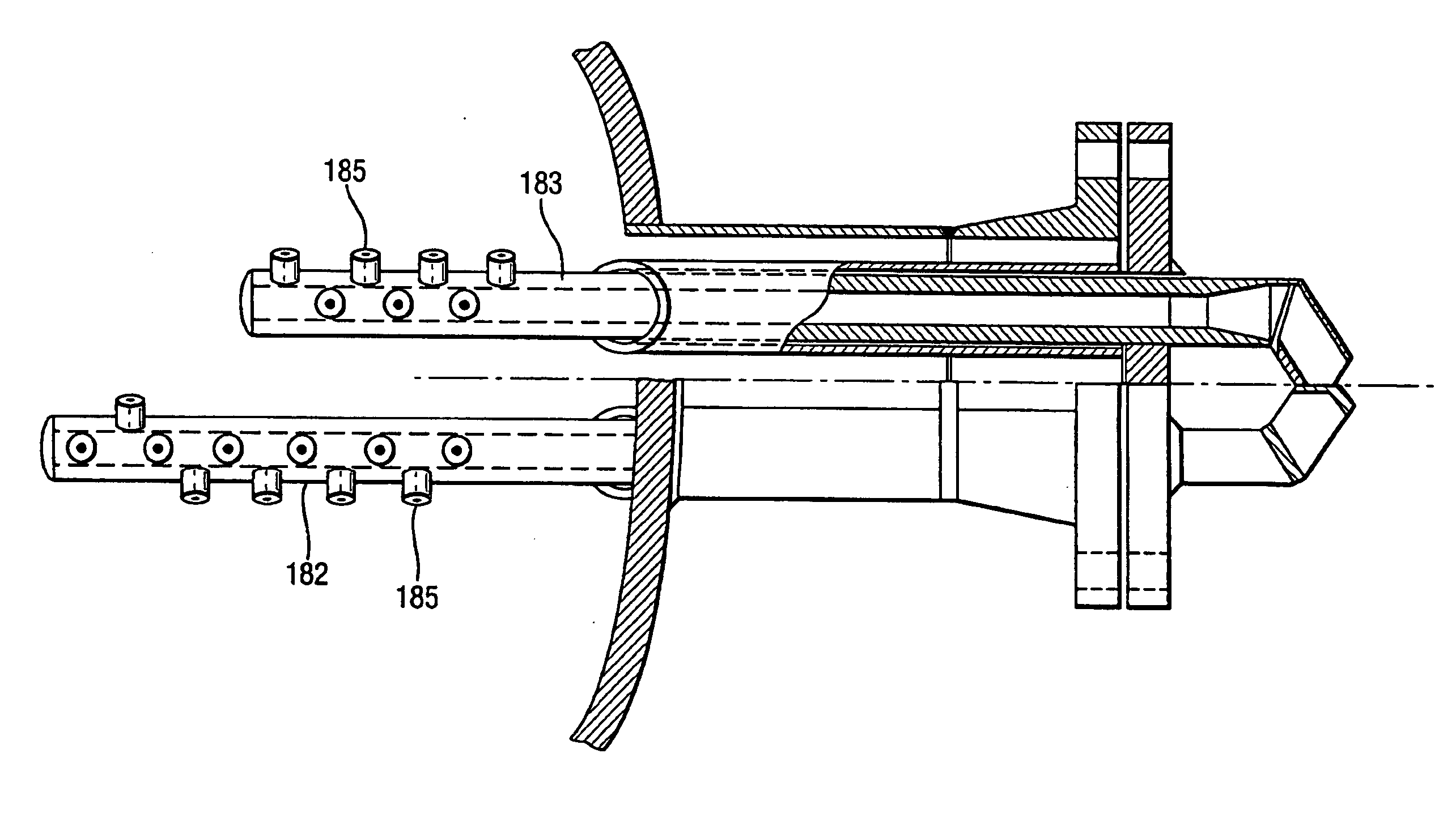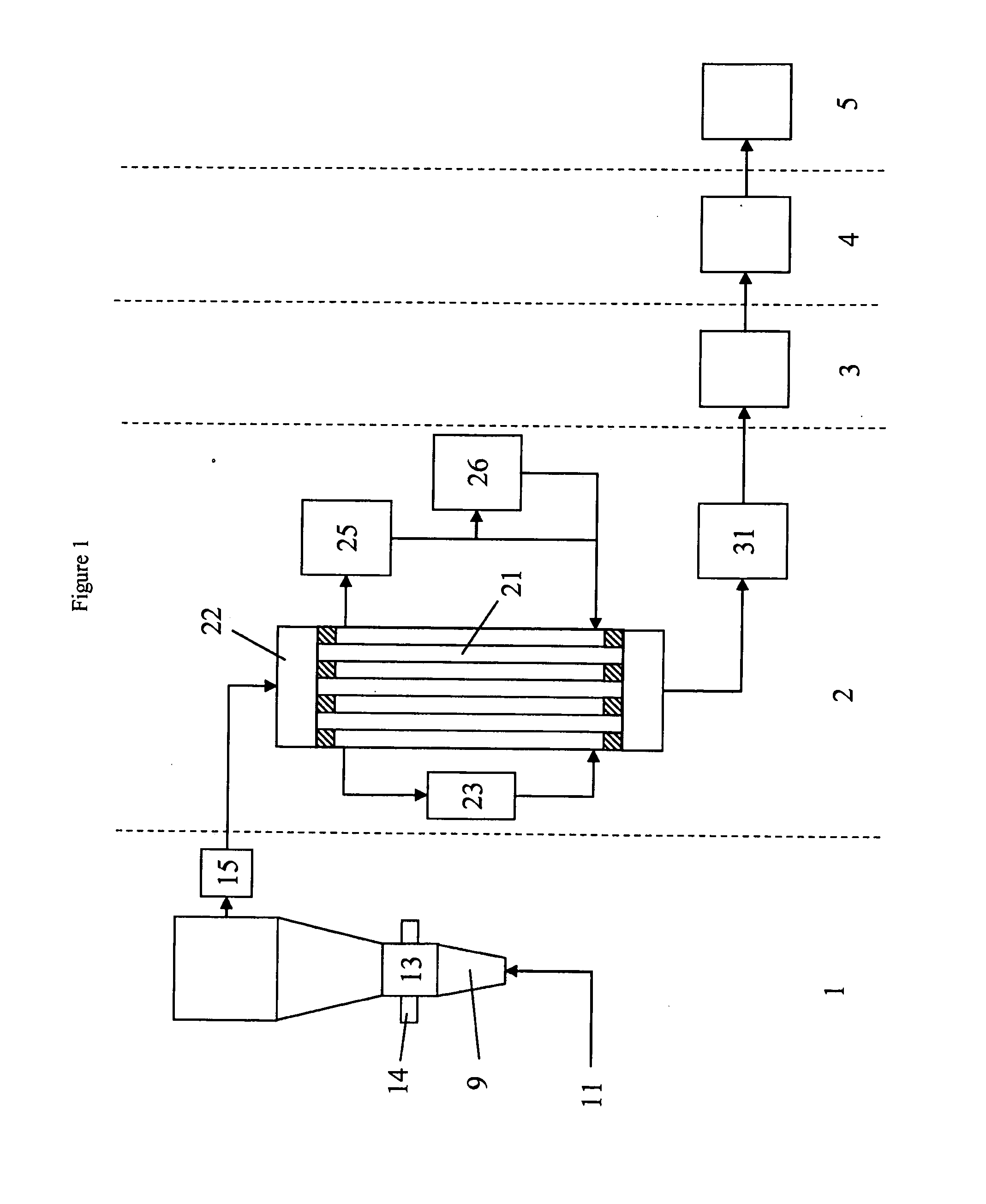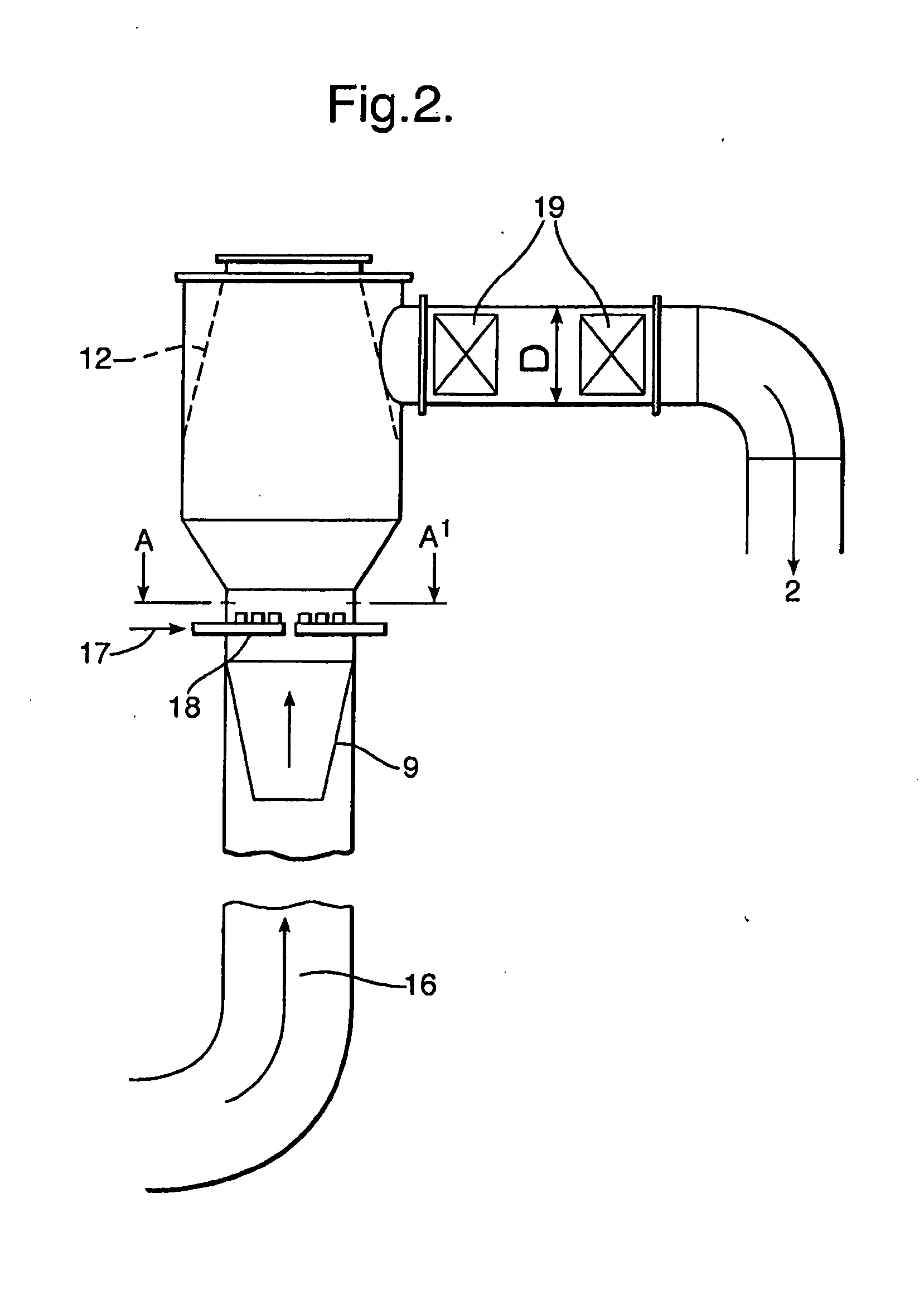Improved Mixing In Oxidation To Phthalic Anhydride
- Summary
- Abstract
- Description
- Claims
- Application Information
AI Technical Summary
Benefits of technology
Problems solved by technology
Method used
Image
Examples
Embodiment Construction
[0030]Although the invention is workable with only one lance carrying one spray nozzle for injecting the liquid ortho-xylene into the stream of oxygen-containing gas, we prefer a plurality of lances, and / or preferably a plurality of spray nozzles, to be present, thereby forming a spray nozzle system. The invention includes that the features of the invention are present in at least one of the elements of these pluralities, but preferably in most and more preferably in all of the elements.
[0031]In a preferred embodiment of the invention, the evaporator vessel of the mixing system is of substantially circular cross section perpendicular to the direction of the gas flow, and a plurality of lances are provided around the circumference of the evaporator vessel, extending across the cross section of the vessel.
[0032]In yet a further preference, eight such lances are projected into the evaporator vessel from the circumference of the vessel.
[0033]Preferably, when a plurality of lances is pro...
PUM
| Property | Measurement | Unit |
|---|---|---|
| Temperature | aaaaa | aaaaa |
| Temperature | aaaaa | aaaaa |
| Temperature | aaaaa | aaaaa |
Abstract
Description
Claims
Application Information
 Login to View More
Login to View More - R&D
- Intellectual Property
- Life Sciences
- Materials
- Tech Scout
- Unparalleled Data Quality
- Higher Quality Content
- 60% Fewer Hallucinations
Browse by: Latest US Patents, China's latest patents, Technical Efficacy Thesaurus, Application Domain, Technology Topic, Popular Technical Reports.
© 2025 PatSnap. All rights reserved.Legal|Privacy policy|Modern Slavery Act Transparency Statement|Sitemap|About US| Contact US: help@patsnap.com



